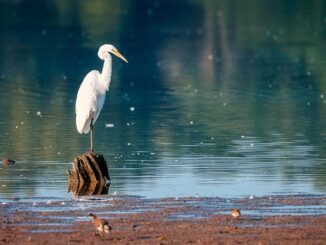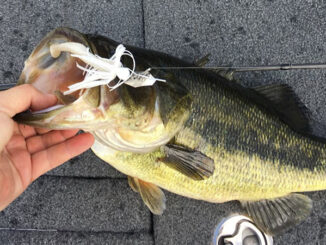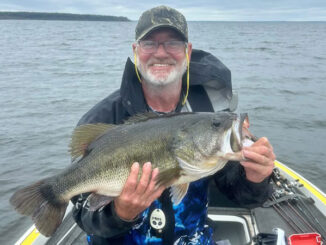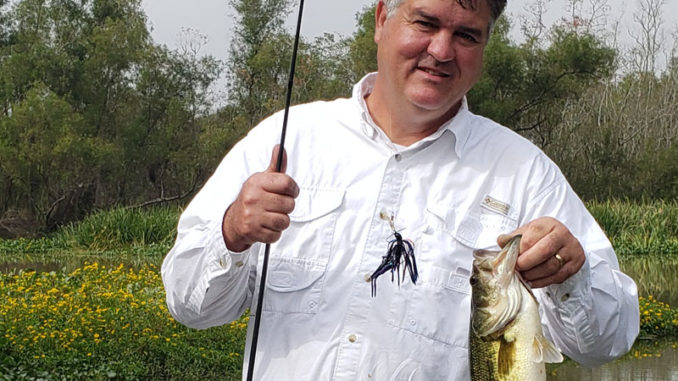
Bass hang on ledges, gorging on shad
If a few cold fronts cool the water in south-central Louisiana this month, some of the hottest bass fishing will be enjoyed in two big bodies of water that many anglers just use as watery highways.
Angler Bill McCarty of Morgan City said the bassing gets good to excellent, weather and water conditions permitting, because shad move into main channels like the Intracoastal Waterway that spans the coast east to west and the “offshoot” of the ICW inside the levees of the Spillway starting around his home town.
“After a couple of cold fronts come through and the water temperature gets cooler, the bass start gorging on shad,” said McCarty, who started reeling in bass after bass after bass in those stretches every October soon after graduating from LSU. His friend, Sidney “Peanut” Michel, introduced him to the pattern, apparently knowing the ledges along the waterway very well, that knowledge leading him to the bass.
“What we try to do in October is fish the Intracoastal Waterway from Amelia almost to Houma,” he said, noting his favorite stretch is from the Bayou Black Landing east toward Houma.
Bass-fishing success also heats up, he said, along another main stretch as late summer turns to early fall along the Port Allen Route, an offshoot of the ICW that goes from Morgan City to Port Allen.
“We concentrate on an area that goes from Morgan City to Bayou Pigeon,” McCarty said. Even more specifically, McCarty and others tap the bass population along the Intracoastal Waterway inside the Atchafalaya Basin from Doiron’s Landing to Belle River Landing.
The bass bite along those stretches actually started already this year.
“In fact, I caught 26 (the first week of September),” he said. “They’re just starting to move out. In 4 to 6 weeks; it’ll be fun.”
Fish are less pressured
One of the plusses of this perennial pattern is that, traditionally, there is little bass-fishing pressure in October. Many outdoorsmen are dialed in to the hunting mode, he explained, and markedly fewer bass anglers are on the water.
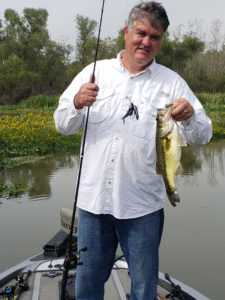
“A lot of people that time of year are getting into the hunting seasons. People are getting ready for the deer season, getting ready for the duck season,” said McCarty, whose top artificial lures are a 3/8-ounce white or chartreuse/white Humdinger spinnerbait with silver Colorado and willow-leaf blades, a similarly colored 3/8-ounce buzzbait and a shad-colored 200 Series Bandit crankbait. Also, after the sun gets high overhead, he said, it’s hard to beat a red shad, Texas-rigged plastic worm.
How does he fish this imposing body of water?
“I like to fish the drop-offs, the ledges where it drops into the channel, 3 feet down to 6 feet down,” he said. “If you can find stumps and laydowns, fish them — and drains.”
McCarty advised anglers to look for pretty, green Atchafalaya Basin water that “ain’t too clear.”
The bite hinges on the level of the lower Atchafalaya River. If the river stage at Morgan City is 3 feet or lower, the fishing should be good, he said.
Some good-sized bass can be caught at this time along both stretches of the Intracoastal Waterway, according to McCarty.
“Oh, yes, absolutely. They average 2¼ pounds, but you catch 4s and 5s,” he said.
It’s always a chase
Don’t always expect to catch bass in the same place two days in a row.
“They definitely move,” McCarty said. “They move with the shad. You can catch them in a stretch of trees one day, and they may 200 yards away the next day, or across the Intracoastal.”
McCarty also doesn’t mind the tugboat traffic along the busy water highway.
“I like tugs because they create current,” he said. “That helps. Tugboats are generally your friend.”
